How Adult Education Enabled The Jamaican Society To Adapt To Social Changes And Development
Sustainable development is a phrase we hear thrown around from time to time in lodge to underline our platonic vision of the future – rid of all the bug that the inhabitants of the Globe tackle today. Depletion of natural resource. Gender inequality. An unequal distribution of wealth. These are simply a few but they illustrate accurately the issues which we are striving to eliminate. However, due to the extensive nature of the term Sustainable Development and the gravity of the situation which it looks to solve, many treat it as an abstract, unachievable concept unremarkably taking into consideration the shocking images of over polluted oceans or the hopelessness of their life situation due to beingness born female. Nonetheless, a thorough understanding of this field and its challenges is quite necessary in our current environment and can help in living a more conscious and donating life.
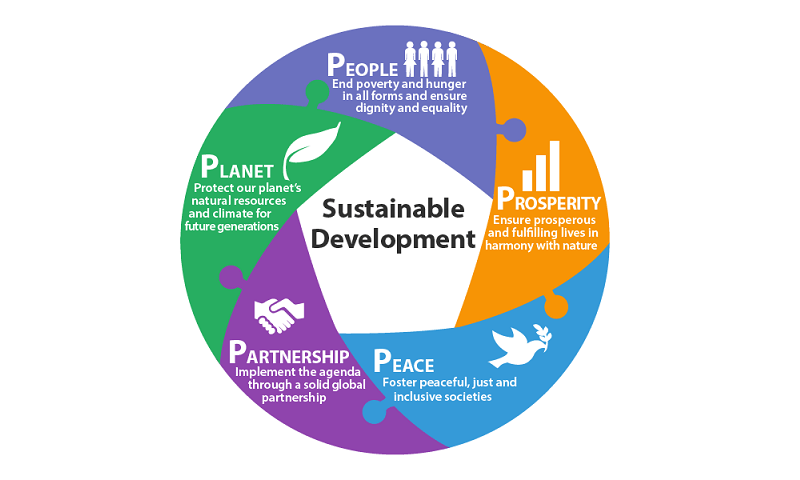
UNDESSA
Sustainable development is "development that meets the needs of the present without compromising the ability of future generations to meet their own needs" – World Committee on Surroundings and Development, 1987
Basically, sustainable development is a long-term solution to how we program our indefinite progress in the time to come without causing impairment to the environs then as to guarantee a safety habitat for the next generations, who will continue to develop their economies, societies, and treat the surround with a similar platonic in mind. It satisfies our needs without sabotaging the opportunities of others. The concept covers a broad scope of matters such as environmental, social, and economic development which continues to bear witness its importance in our lives equally it affects all aspects of them. The United Nations have gear up out a number of Sustainable Evolution Goals and targets to serve as guidelines for the time to come and optimal witting development.
UN Sustainable Evolution Goals
During the United nations Sustainable Development Summit of September 2015, which took place in New York, the Transforming our world: the 2030 Agenda for Sustainable Development was adopted by the 193 countries belonging to the United nations General Assembly and conspicuously outlined 17 Sustainable Development Goals (SDGs) and 169 targets which are associated to them. They tackle social, economic, personal, physical and ecology issues which, again, emphasizes the all-encompassing nature of sustainable evolution. These goals proposed past the UN have come under scrutiny, however, for two main, quite different, reasons. Ruth Kattumuri of the LSE Asia Research Centre & Bharat Observatory has criticized the goals for not putting enough emphasis on social issues, whilst the goals regarding economical and ecology security are extensively covered. She also states that the UN undermines the gravity of the problem of human trafficking which is estimated to be a $32 billion industry which exploits and violates the man rights of hundreds of thousands of men, women, and children each yr. Kid abuse is another problem that the SDG's set out past the UN fail to tackle.
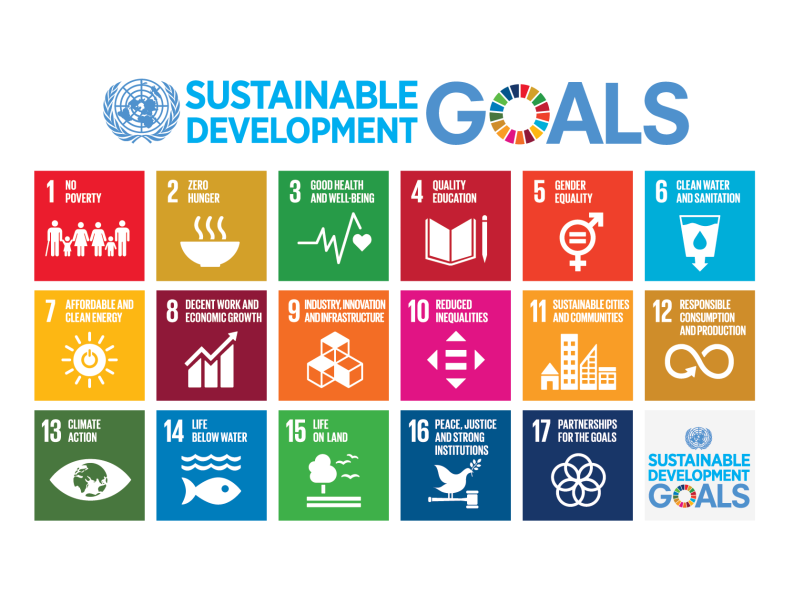
UNESCO
On the other side, many contend that the sustainable development goals comprehend too broad an expanse of issues and should exist more focused if they are to be achieved over the adjacent twelve years. Some targets could besides be said to be rather idealistic, such as the first target – No Poverty . Jonathan Tanner of the Guardian went every bit far equally to say: " We're going to accept to pretty much end violent disharmonize, experience a Damascene climate conversion, sustain high rates of economical growth, avoid any recession in poor countries and make sure nobody who is disabled or seriously sick sees their income driblet to less than $1.25 a twenty-four hour period ." There is a lot of truth to what Mr. Tanner wrote, even so, some of the SDG's out to exist taken with a pinch of common salt and be treated equally ethics which we aim to achieve. They may not necessarily be fully doable due to the nature of humans, nevertheless, the closer we get to them, the better.
In brusk, the SDG's set out by the UN in 2015 are, indeed, very proficient guidelines, notwithstanding, their achievability may non be feasible in our current environment of violence, corruption and broad gaps in the wealth of developed and less developed countries. We should merely hope that nosotros come to a twenty-four hours when they volition stop being guidelines and become our reality.
Why is Sustainable Development Of import?
Owing to our quickly growing population, in the future more resources will be needed in club to arrange for information technology and, unfortunately, the resources that we have benefit of at present are non all renewable. Taking this into consideration, the tech industry will have to adapt to future weather condition as of now the rare metals and minerals used in the industry, such equally Palladium – a metallic widely used in the production of consumer electronics, are condign increasingly scarce . Another factor to take into consideration is the fact that Prc currently produces 97% of the world'southward rare earth materials and were it to, hypothetically, place a blockade on its exports, production of technological goods would get incredibly difficult. Seeing as our industries are investing and relying more and more on technology if rare earth metals were to slowly disappear, prices would rocket, and and so would inflation rates, making it incommunicable to part for, at least, a prolonged flow of time. For this reason, new alternatives and innovations in the tech industry are essential to sustainable development in society to secure steady development in this field without relying on an excessive amount on exhaustible materials. SDG 9 and target 9.4 corresponds to this consequence and suggests to:
By 2030, upgrade infrastructure and retrofit industries to make them sustainable, with increased resource-use efficiency and greater adoption of make clean and environmentally audio technologies and industrial processes, with all countries taking action in accordance with their respective capabilities .
Another crucial issue are the potential food shortages in the future in the face of our growing population which is estimated to hit a fiddling under 10 billion by 2050 . According to Nafis Sadik: "A state's ability to feed itself very much depends on 3 factors: availability of arable land , accessible water and population pressures". The area of arable state currently bachelor is diminishing due to deforestation which limits the availability of local nutrient for people inhabiting areas about to the forests, peculiarly for the peoples of Southeast Asia and South America. Due to the soil erosion, which normally occurs post-obit the conversion of wood state into agricultural land for growing greenbacks crops such every bit coffee, tobacco or cotton, formerly fertile land is unable to be used for agricultural purposes and often morphs into desert state as was the case with the Brazilian Cerrado.
Since 1960, an estimated one-3rd of the globe'southward arable land has been lost through erosion and other degradations.
which is incredibly worrying, taking into consideration the growing population and Dr. Sadik'south conditions for a country'southward ability to generate enough food supply. Of course, we can not ignore the fact that this is a nifty issue seeing that demand for lumber is never ending so deforestation is unavoidable. Some companies, such as IKEA, found trees in the place of those which they cut down, yet, these trees are often planted with the aim to generate more profit in the future and these formerly abundant forests are usually replaced with monoculture plantations which greatly cutting down on the biodiversity of the surroundings. In conclusion, unless nosotros find more sustainable alternatives to wood, the future doesn't await that bright.
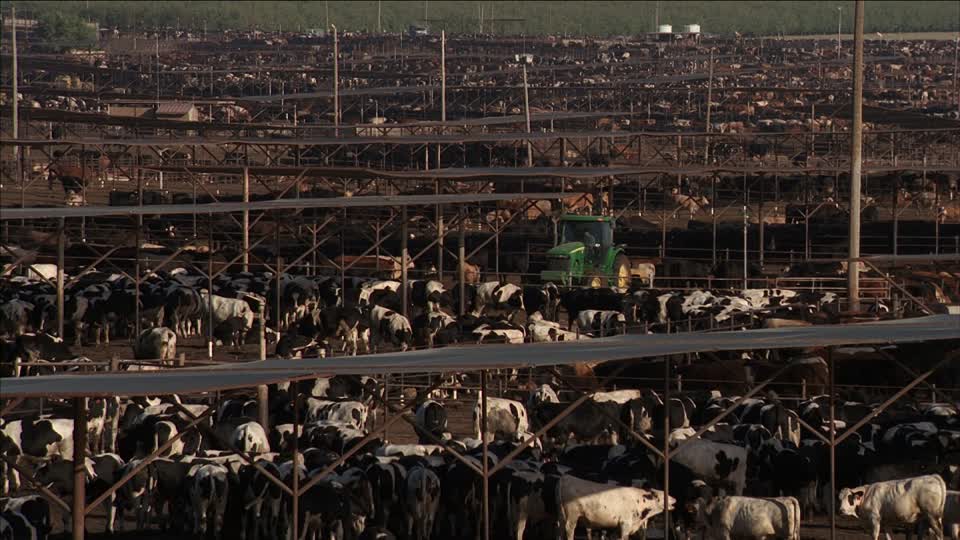
Framepool
Something else which is a looming modify nosotros will have to make in the future is the manner in which livestock is raised and the frequency with which it is being consumed. Currently, livestock accounts for around 30% of the world's surface which is fit for raising animals and due to the loftier need for meat and dairy products, more and more areas are existence transformed into grazing state or just industrial livestock production. Setting aside the numerous ethical bug associated with the methods of raising livestock and even the very deed of consuming products of an fauna origin, the consumption of beast products at our electric current level is only not sustainable owing to the amount of freshwater dedicated to the budget of animals , for instance.
As we know, admission to h2o is one of the main contributing factors to feeding a society and the h2o going towards the unethical industrial production of livestock would help cultivate could be going towards raising crop plants, which require less water to produce , less state and which have the potential to feed a much larger amount of people. It'south very important to take this into consideration in the context of the crunch of overpopulation and sufficient nutrition, however, the keeping of livestock poses many other challenges to sustainability:
- The pollution of bodies of water with agricultural waste matter
- The amount of fuel used in the transport of animal products and the livestock itself (high carbon emissions)
- Emissions of methane and other greenhouse gases by livestock which contributes to global warming
- Diseases associated with an excessive consumption of animal products, such every bit diabetes, cardiological diseases, and obesity
To conclude, sustainable evolution an event which should be treated very seriously as it affects anybody, as illustrated by the scenarios above. If the world were to continue functioning as information technology is currently, many exercise not predict it a stable future. In order to secure a secure environment for our future generations, every single person and corporation needs to start reconsidering their own lifestyle choices and spreading awareness about the problems that plague this planet so that we can slowly begin to enforce actual changes.
The Principal Challenges of Sustainable Evolution Today
Having highlighted the importance of sustainable development, it is also of import to sympathise that information technology does need a lot of concentrated try and, like many things in life, it does accept many challenges ahead of itself. It is too important to annotation that sustainable development is every bit valid in developing and adult countries, despite them dealing with polarly opposite sides of the spectrum. Adult countries may exist developed but that doesn't necessarily imply that they are sustainable and for these countries, the principal goal is to rid their society of issues such equally social inequalities, waste matter management, and environmental responsibility.
- Lack of financial resource to conduct out and plan sustainable development
- Sustainable development is oft not possible in war-torn countries as there are other priorities on manus.
- Natural occurrences, such as earthquakes and tsunamis, can pose a threat to sustainability every bit they can shift the flow of water and destroy certain elements of infrastructure. ( In the village of Ramche in Nepal, the only source of h2o was shaken off course by the convulsion of 2015 and every bit a event of the difficulty of access to the village, it has been undergoing a water crisis. Expenditure on bottled water in the village has in turn grown and in many other areas in Nepal undergoing a h2o crisis, people resort to drinking and cooking with E-Coli infected water as an act of desperation. Meanwhile tsunamis in Southeast and East asia may pose a threat to the already existing sustainable infrastructure, such equally the destruction of means of public send in Japan.)
- The governmental conflict between immediate profit and investment towards sustainable technologies. ( In Poland, the government has even increased financing towards the mining sector instead of moving full steam ahead towards adopting sustainable energy sources, with coal amounting towards 80% of total energy generation in Poland . These measures are idea to have been implemented as a move to win miners' votes in the south of Poland.)
- Abuse.(Funding to developing countries is commonly provided through foreign grants, in the example of Nepal foreign grants constitute the majority coming from the U.k. . Nevertheless, due to bureaucracy and corruption in Nepal, in order to laissez passer sure development projects a stipend needs to be paid to ministers as well every bit service fees to the Nepal government which significantly boring down NGO processes.)
- Lack of efforts at a municipal level
Sustainable Evolution in Nepal – A Instance Study of Sustainable Evolution and its Challenges
As a result of its unique geographical location and geopolitical situation , Nepal, as a developing land, has faced many environmental, social, and economic problems, such as the extreme levels of pollution in bodies of water equally was in the example of the Bagmati river which, fortunately, afterwards state and volunteer-run efforts is now cleaner than it has been in a long time. Unfortunately, that fate has not met many of the 600 rivers flowing through the Kathmandu valley, where the population of the country is the densest, and they remain polluted by industrial waste from nearby factories. Owing to funding from the international governments, Nepal has recently undergone a period of accelerated evolution and an introduction to a consumerist culture which in conjunction with the lack of awareness regarding environmental issues has atomic number 82 to a inefficient use of freshwater that is oh then arable in Nepal.
Waste product management
Having had grown upward in Nepal the one thing that has a prominent place in my memory is the rubbish – it is everywhere. Streets, rivers, fields, beingness eaten in the centre of the road by a hungry goat or sacred cow. Due to a lack of common noesis on the recycling of rubbish, the same system of dealing with waste produced by the inhabitants of Kathmandu (especially) has been employed – dumping it all in landfills and hoping for the best without investing in appropriate infrastructure to reduce the rubbish in the Kathmandu waste sites. At this signal in time, it involves reducing Kathmandu itself, in a certain sense, equally rubbish is a constant fixture in its landscape. In spite of pilot projects existence run in order to examination out methods of reducing the waste matter levels, such equally the edifice of fecal sludge handling plants and infrastructure assuasive biogas generation, due to the visible incompetence of the regime and municipalities these projects have been left abandoned.
Luckily, the problem is not being entirely ignored as local initiatives are being created in guild to gainsay the issue – WEPCO (Women's Environment Preservation Commission) is one of them. Created in 1992, they are defended to cleaning and conserving the urban environment in the Kathmandu Valley. Thank you to initiatives similar these, awareness is being raised through the Nepali social club, specially youth, about the consequences of a polluted surround equally well as municipal Solid Waste Management being proposed. Unfortunately, non all projects proposed by NGOs come into ability as a upshot of the abuse and inefficiency of the Nepali government and information technology is most probable that Nepal will have to go through a truthful centre-opener until its citizens and the people responsible for the environmental well beingness of the country wake upwardly.
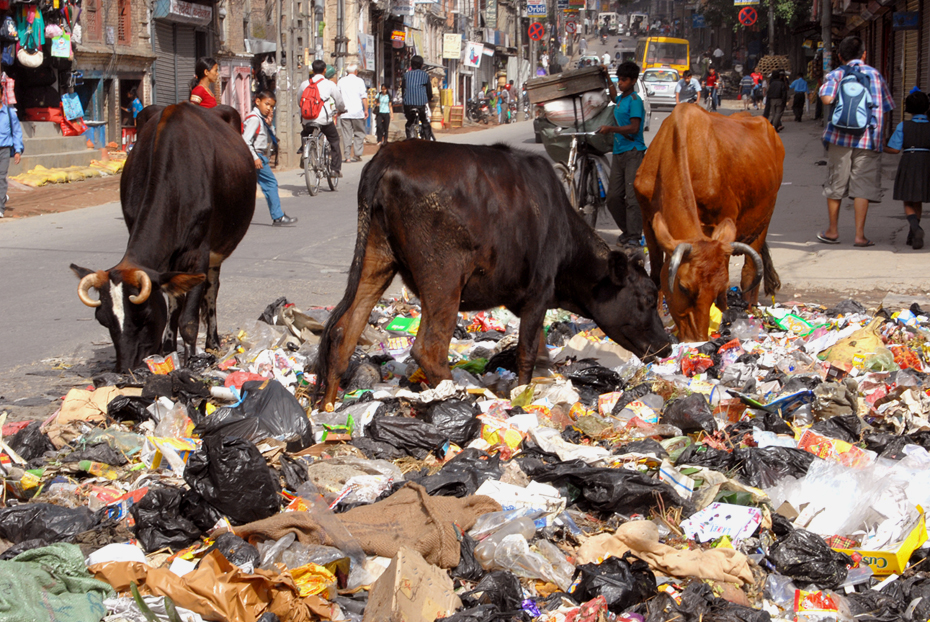
Reuters/Deepa Shrestha
Social Inequalities
Autonomously from a plethora of environmental issues that one of the about environmentally diverse countries in currently suffering, there are also a number of social issues nowadays in Nepal that urgently require attention. For the sake of beingness concise, it is necessary to highlight the most crucial issues, however, it is vital to comprehend that every inequality, no thing how small, deserves attention. One of the nearly glaringly obvious social inequalities in Nepal is the corruption rampant in the government.
Information technology is important to beginning empathize what corruption is exactly as it's some other one of those buzzwords you can meet floating around without fully understanding them. According to Madhusudan Sharma Subedi:
"Corruption is conventionally understood, and referred to, as individual wealth-seeking behavior of someone who represents the state and public authority. It is the misuse of public appurtenances by public officials, for private gains. In simple terms, corruption may be described as "an act of blackmail" or "the apply of public power for private profits in a mode that constitutes a breach of constabulary or a departure from the norms of society (Amundsen 2000)"
Corruption plays a keen role in the situation Nepal currently finds itself – in a very slow if at all nowadays charge per unit of development, polluted and in poverty. Owing to the elitist nature of Nepali politics, despite information technology being a democratic country, it is very difficult to gain recognition as a new political party. Therefore, the same faces stay in ability, even if they are not in a position of power in the public eye, meaning that bribes go on being handed around from corporations in order for the police to turn a blind eye to the amount of waste they're churning into a nearby river. In this type of climate, development is very difficult unless there is a large amount of profit associated with it. Appropriately, northo matter how many bills or projects are put earlier parliament, the proposals are aimed to stunt a individual party's business organisation, for instance, he tin e'er pay the politicians off and the land remains in an unjust sort of limbo.
Gender inequality is another social effect ram pant in Nepal today, fifty-fifty in spite of the mass immigration of predominantly male workers abr oad in search of piece of work when women are left responsible for farms, homes and local businesses. Why is that? Accept this example – in rural regions of Nepal, women are often left responsible for cultivating country and the keep of livestock (1.6 times more women are involved in the subsistence agriculture sector) and even though she is responsible for this subsistence or cash farming, she does not have access to the profit the land yields, that access is granted solely to the "breadwinner" of the family – the hubby. Due to the patriarchal nature of Nepalese social club, economic abuse is ordinarily used against women with men claiming the entirety of access to shared funds and belittling women by monitoring their bones spending habits
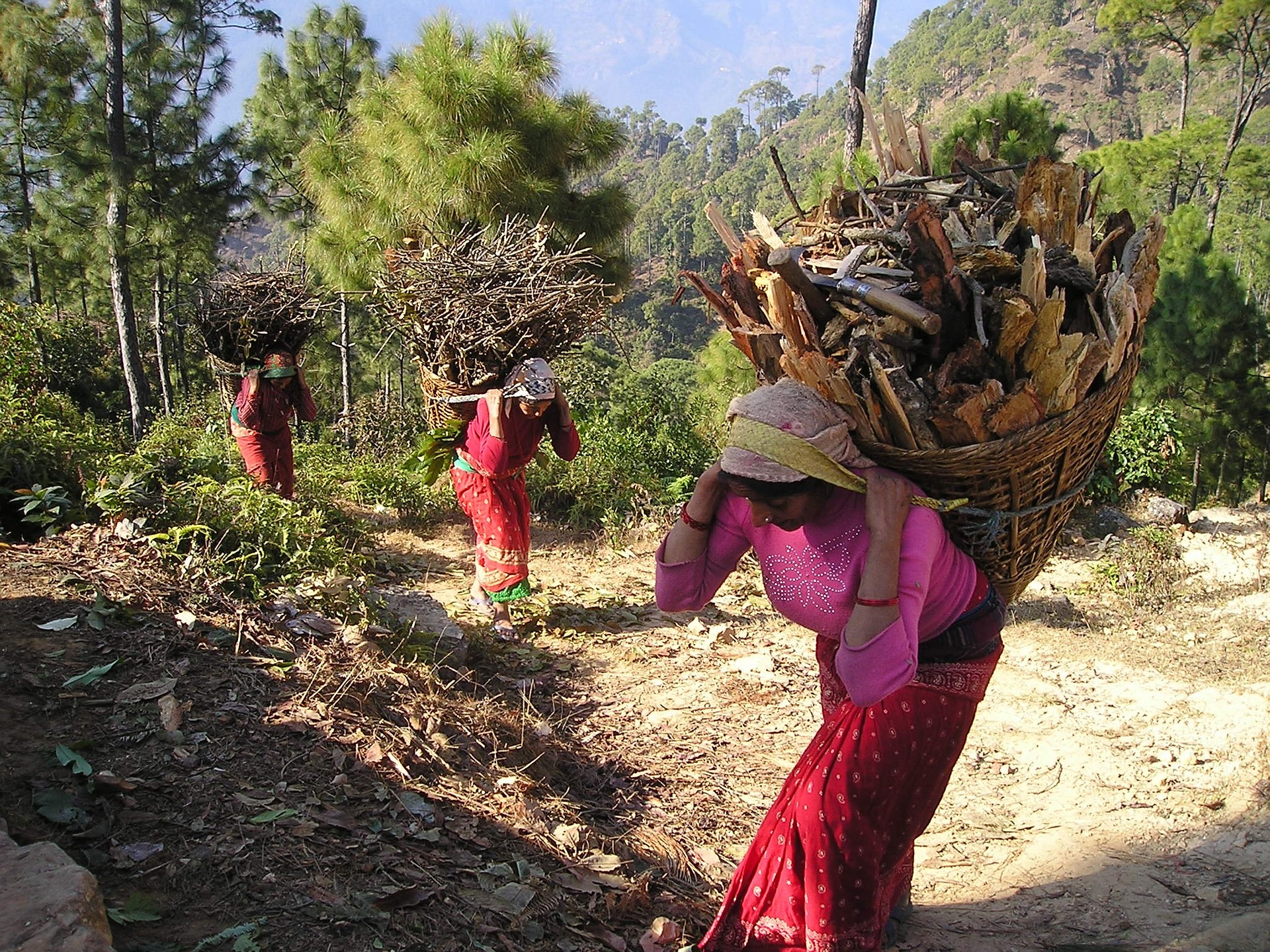
Overall, from the onset, Nepali women are doomed to alive a life associated with difficulties. A woman who first falls pregnant with a baby girl will oftentimes undergo the procedure of having an abortion, either to spare her from the same fate or as a event of domestic pressures of producing an heir to a family unit business or a kid who can inherit the father's will. Speaking from experience as a firstborn Nepali girl, the inequality in treatment betwixt children is immense. One memory I have is of my brother, 7 years younger than I, receiving golden bangles and gifts from my Brahmin grandparents while I received none. All because I was a girl and I wasn't anything to be proud of. I was lucky enough to take a mother who encouraged me to succeed in life and evidence everyone wrong, however, many girls growing up in conservative Nepali families, especially in rural regions, do non encounter the same fate.
71% of Nepali males are literate in comparison to the very low percentage of 43% of women who are literate – this lack of access to educational activity is often brought upon by responsibilities to family and the pressure of wedlock and engaging fully in married life, these circumstances often result in women non going to hi gher instruction institutions or even to chief schools. If they exercise take the opportunity to go to work, it is oftentimes far more labour intensive than that of men and they piece of work iii hours more a day on boilerplate. It is ofttimes the case that in search for work, Nepalese women emigrate to places like Lebanon or Saudi arabia, lured by promises of a improve life, better work atmospheric condition and better pay, when in reality her work permit is handed to her employer nether the karfala system and if she dares speak out against an calumniating employer, she risks firsthand deportation. Work in Republic of india is a whole other story, as due to the open border betwixt India and Nepal, women are at a very loftier chance of hard labour or sexual trafficking. Edge police are often bribed into turning a blind eye to the sexual trafficking of approximately 200 000 Nepalese women who oftentimes end up in brothels in Bharat.
In short, women's rights are an issue widely abused in Nepal as a outcome to the patriarchal culture omnipresent which does non desire to brand way for "Western" ideals of freedom of speech, the right to piece of work, the condemning of domestic violence and the right to an didactics. Women are often left impoverished as a result and make up much of the Nepali population which resides in poverty. Achieving female empowerment in Nepal is one of the challenges of sustainable evolution there equally extreme poverty is not a sustainable status quo . There are initiatives being created in order to facilitate the accessibility to microloans to women in rural regions, in order to disincentives their migration abroad, such as the Volunteers Initiative Nepal and UN Women and the UNFPA play a meaning role in securing health services and educational activity on sexual health for women.
Nepal is a very unique example of a developing country due to its civilization, political practices and geopolitical location and not all development projects agile in Nepal tin can exist applied to many other developing countries, all the same, it helps in the analogy of how challenging sustainable development can be for many countries and how very of import achieving information technology is. Hopefully, a liquidation of the corruption in the political arrangement will make headway for positive change, nevertheless, owing to its long-running roots in Nepal, that mean solar day will probably not make it for many a year and sustainable evolution will have to continue to be led past denizen-led initiatives and NGOs.However, the latter of the two faces its own internal issues and its ain form of abuse (many foreign humanitarian workers come to Nepal for the easy coin and not entirely out of purer aspirations) so it can testify to exist inefficient. The hereafter may not be bright for Nepal, nevertheless, there is a future in shop for the country and it is upwardly to the regime, Nepali citizens and the international community to decide how it pans out.
Tin we achieve Sustainable Development?
In spite of the very difficult circumstances in which many developing countries currently find themselves in, sustainable evolution is achievable, however, it would crave a lot of concentrated and coordinated endeavor. If appropriate supply-side policies, such as teaching and vocational programmes, were to be implemented, illiteracy rates would driblet and people would exist fabricated more aware about the surroundings surrounding them which would contribute profoundly to a rise in environmental awareness. In improver, an appropriate authorities, which prioritized the growth of light-green Gross domestic product instead of GDP measured past the usual methods, would take to come into power and employ its budget efficiently in order to invest in green energies, wellness services, and benefits systems, amongst others. Of course, this is only touching the tip of the iceberg, nevertheless, information technology illustrates very well that sustainable evolution is doable and straightforward, nevertheless, each of the steps underlined above are incredibly hard to achieve. Last, sustainable evolution is achievable, notwithstanding, it is only achievable is everyone is dedicated to achieving it. In order for this to happen, the world needs a wakeup phone call of cosmic dimensions – the only worry is it might be too belatedly past and then.
Olga Adhikari
Further Reading & Watching
Video explanation of Sustainable Development
List of SDGs and Associated Targets
Report on Sustainable Evolution in Cuba
Nepal and SDGs
Women Empowerment in Nepal
Corruption in Nepal: An Anthropological Enquiry
Sources:
- https://world wide web.acciona.com/sustainable-evolution/
- https://www.theigc.org/blog/sustainable-development-the-goals-and-the-challenges-ahead/
- https://greenliving.lovetoknow.com/Why_Is_Sustainable_Development_Important
- https://www.soas.ac.uk/cedep-demos/000_P501_USD_K3736-Demo/module/pdfs/p501_unit_01.pdf
- https://sustainabledevelopment.un.org/content/documents/2843WESS2013.pdf
- http://www.fao.org/docrep/U3550t/u3550t02.htm
- https://www.dw.com/en/environment-world-population-twenty-four hours-agriculture-sustainability-nutrient-waste-nutrient-security-overpopulation/a-39628974
- http://scientific discipline.time.com/2013/12/xvi/the-triple-whopper-ecology-touch on-of-global-meat-product/
- https://www.un.org/sustainabledevelopment/sustainable-evolution-goals/
- https://world wide web.theguardian.com/global-development-professionals-network/2014/mar/11/end-earth-poverty-unrealistic-inequality
- http://wyborcza.pl/seven,155287,22566805,rzad-sypnie-miliardami-zlotych-na-gornictwo-media-publiczne.html
- https://sustainabledevelopment.un.org/content/documents/1498Sagar%20Majumdar.pdf
- https://reliefweb.int/sites/reliefweb.int/files/resources/CFEEBC994F3E642AC1256CA2005BD30B-isdr-natural-dec01.pdf
- https://world wide web.reuters.com/commodity/united states of america-britain-nepal-aid-corruption/united kingdom of great britain and northern ireland-should-cut-aid-to-nepal-if-endemic-abuse-persists-report-idUSKBN0MN00F20150327
- https://www.theguardian.com/global-evolution/2017/apr/19/assist-agencies-accuse-nepal-government-of-hampering-their-work
- http://annal.nepalitimes.com/commodity/nation/a-load-of-rubbish-kathmandus-garbage-problem,4039
- http://world wide web.imnepal.com/social-problems-evils-inequalities-nepal/
- https://pdfs.semanticscholar.org/2c4b/f5fdce93866cb792cd490fdeada2e1bd64f4.pdf
- https://borgenproject.org/gender-based-inequality-nepal/
Source: https://www.iynf.org/2018/08/a-guide-to-sustainable-development-and-its-challenges-in-developing-countries/
Posted by: smithmoused1964.blogspot.com


0 Response to "How Adult Education Enabled The Jamaican Society To Adapt To Social Changes And Development"
Post a Comment